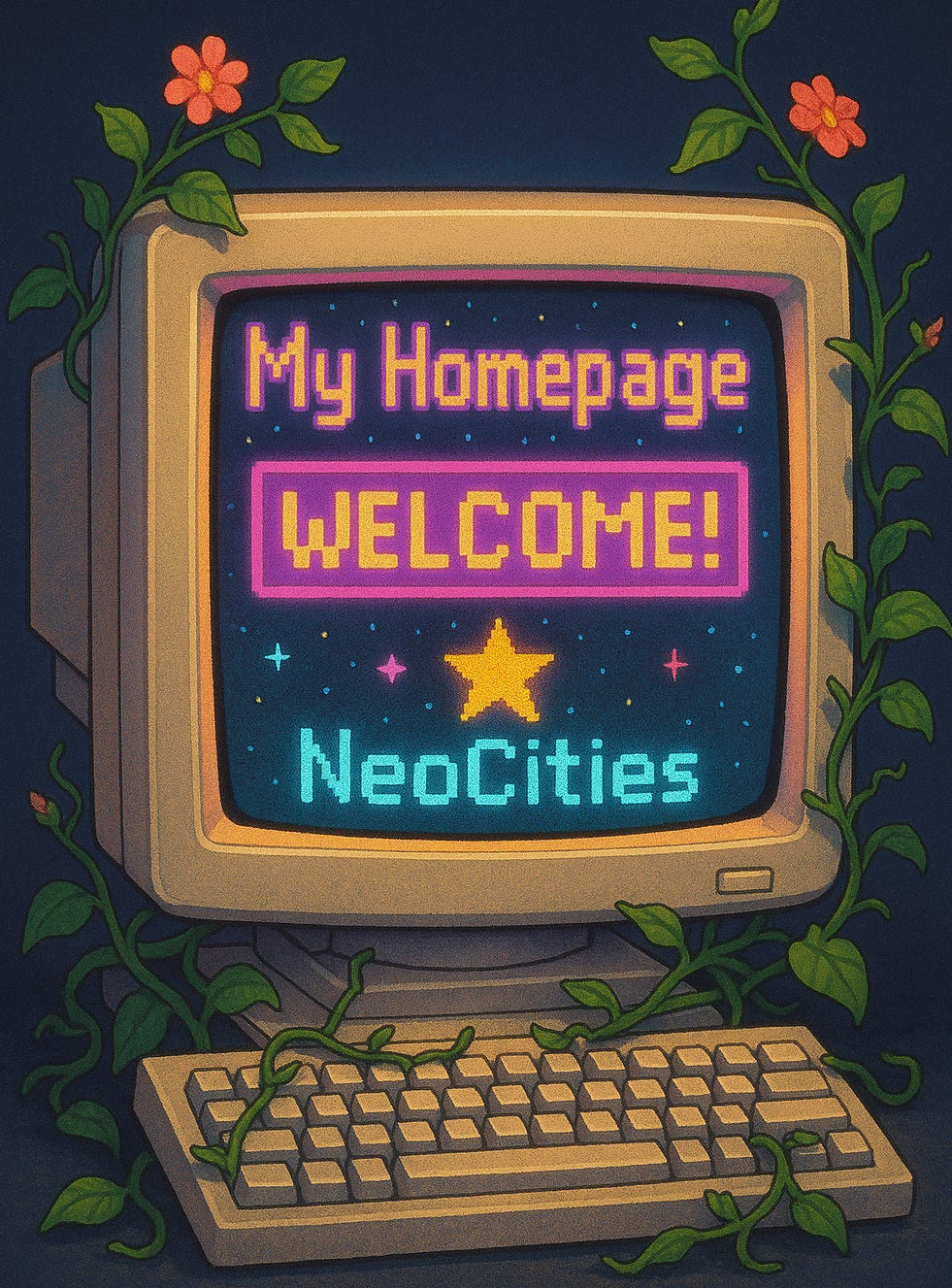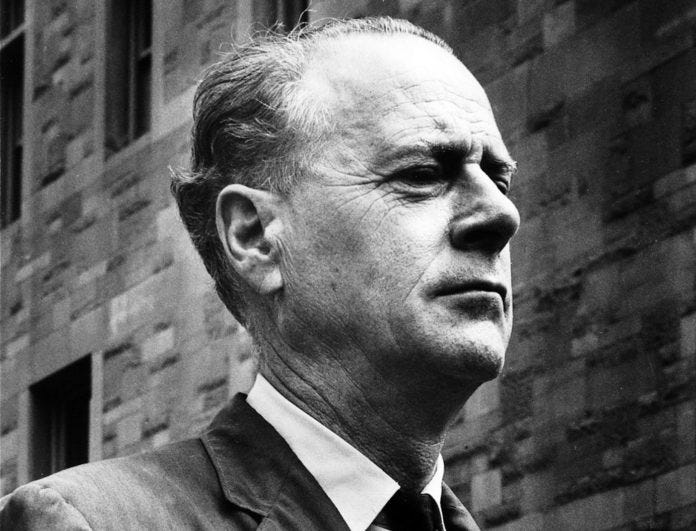Before Platforms, We Created
#023: Rediscovering ownership, expression, and agency in a world of parasitic platforms.
Beginnings
I didn’t start as a designer. I started as a creator.
In 1993, I was making printed newsletters in Microsoft Publisher and handing them out to my extended (Catholic) family. By 1996, I had taught myself HTML so I could publish my writing online and find an audience bigger than the handful of relatives who humored me. I likely had one of the internet’s first blogs — TechDungeon — where I wrote about technology before “blog” was even a word. Bill Gates answered one of my questions live on a DirecTV special about Windows ME.
I still remember convincing my grandmother to drive me to our local ISP’s office in Portsmouth, Ohio so I could buy and set up my own .com domain: Fresh2000.com, obviously. It became a digital punk rock zine.
Back then, I was also an angsty, depressed teenager who used the web as my outlet. I made raw, hand-coded HTML pages that expressed what I couldn’t say out loud. They weren’t pretty, but they were mine. And in shaping those pages, I was shaping myself. The web gave me agency at a time when I felt I had none.
The Web We Lost
By the time I went to college in 2002, I chose one of the only universities in the U.S. offering a four-year bachelor’s degree in “interactive media” — UCF (the University of Central Florida). Within a semester, I realized I already knew more about building websites than the instructors. But there was one thing I learned that stuck: Marshall McLuhan’s belief that “the medium is the message.”
I didn’t need convincing. I’d lived it.
McLuhan argued that the form of a medium — not just the content it carries — shapes how we experience the world. And the early web proved him right. With just HTML and curiosity, you could stake out a digital plot and make it yours. The rough edges weren’t failures. They were signs of life.
But that message changed. Platforms like Facebook, Twitter, and YouTube replaced hand-built pages with polished templates. The web’s message shifted: no longer “you can create” but “you can consume.”
And here’s what scares me: today’s version of young me might not see the possibilities I did. The paths of expression now feel reduced to two dominant options — short-form video on TikTok or long-form video on YouTube. Both are controlled by algorithms, both are designed to maximize engagement, and both leave little room for experimentation outside their format. Creativity becomes boxed in, and opportunity narrowed.
The Indie Web Returns
That’s why the indie web feels so important.
It isn’t nostalgia — it’s an antidote. It shows there are more ways to create than the video treadmill of TikTok and YouTube. It proves the web can still be a medium for making, not just performing.
At its core, the indie web is about ownership and control. Instead of renting space in someone else’s feed, you build something that’s yours. Instead of optimizing for reach, you design for expression.
NeoCities, launched in 2013, has grown from 57,000 sites in 2015 to over 1.23 million today (Wikipedia). Each site is a small act of defiance — proof that people still want to carve out their own corners of the internet.
Webrings and directories are reappearing, offering discovery through human curation instead of algorithmic manipulation.
The IndieWeb movement is building protocols like IndieAuth and Webmention, creating decentralized ways to connect and converse across sites.
Digital gardens, popularized by Maggie Appleton, are evolving personal websites that grow organically over time — less about publishing, more about cultivating.
The indie web widens the field of creative possibility. It gives today’s teenagers the kind of outlet I once had: messy, personal, and wholly theirs.
A Wider Cultural Shift
The indie web is part of a broader cultural move back toward ownership and slowness.
Books. Around 68% of Gen Z readers in the U.S. prefer print books, and globally 80% of books purchased by 13- to 24-year-olds are print (World Economic Forum). In 2021, U.S. print sales hit 843 million copies, the highest in a decade (The Brand Leader).
Zines. Once thought obsolete, zines are resurging as small-scale, handmade artifacts of expression and community (Color House Graphics).
Cassettes. U.S. sales hit 436,000 units in 2023, an eightfold increase since 2014 (Isina). For Gen Z, tapes transform listening into a ritual instead of background noise.
These aren’t nostalgia fads. They reflect a shared desire to push back against homogenization and reclaim media that feels more human.
And the indie web is the digital frontier of that same shift.
Why It Matters for Designers
For designers, the indie web isn’t a curiosity. It’s a mirror showing what design could be if we moved beyond growth-at-all-costs.
1. Texture over uniformity
Platforms scale by sanding down difference. Indie sites embrace quirks, rough edges, and personality. Sometimes difference is the value.
2. Discovery through community, not algorithms
Webrings and curated directories are slower and less efficient, but they foster serendipity and belonging.
3. Sufficiency as a design principle
Most indie sites aren’t trying to reach millions. They’re “big enough” when they serve their maker and a handful of visitors. What if mainstream products embraced sufficiency instead of infinity?
4. Agency over engagement
The indie web gives people control of their own spaces. For design, this challenges the fixation on engagement as the only success metric. Designing for agency builds trust — and creates more durable products.
The Medium is Still the Message
McLuhan was right: the medium is the message.
When the medium is the infinite scroll, the message is consume.
When the medium is TikTok or YouTube, the message is perform.
When the medium is a hand-built site, the message is create.
As a teenager, I was lucky to grow up in a version of the web that let me create without constraint. My fear is that today’s teenagers feel boxed into only two lanes — short-form or long-form video — with creativity reduced to whatever drives the algorithm.
The indie web offers another path. It’s not the easiest, or the most convenient, but it’s open-ended, expressive, and free.
Books, zines, and cassettes point to a broader cultural longing for ownership and authenticity. But it’s on the web — our most powerful medium for creativity and connection — where this shift matters most.
If we can re-center the web’s message from consume and perform back to create, we won’t just rediscover what made it magical. We might also open the door for a new generation of young creators to find their voice — the way I once found mine.
Cassettes are back. Zines never really left. Books are thriving in the hands of Gen Z. And the indie web — messy, personal, one-of-a-kind — is rising, one handcrafted page at a time.





I agree with the concept that the medium is the message, and that leads me to be interested in non-digital mediums too. There’s something important about being present — body, mind, and soul — that leads us to create events, artifacts, and memories that we don’t have online. Think “come over and listen to this album” rather than “let me send you these MP3s”.
I like an internet with less consumption and more creativity, but I also like an embodied life in a particular place with particular people.
I really enjoyed this reading. As an early 2000s teenager, I can relate to many of these points, and I can’t help but feel nostalgia